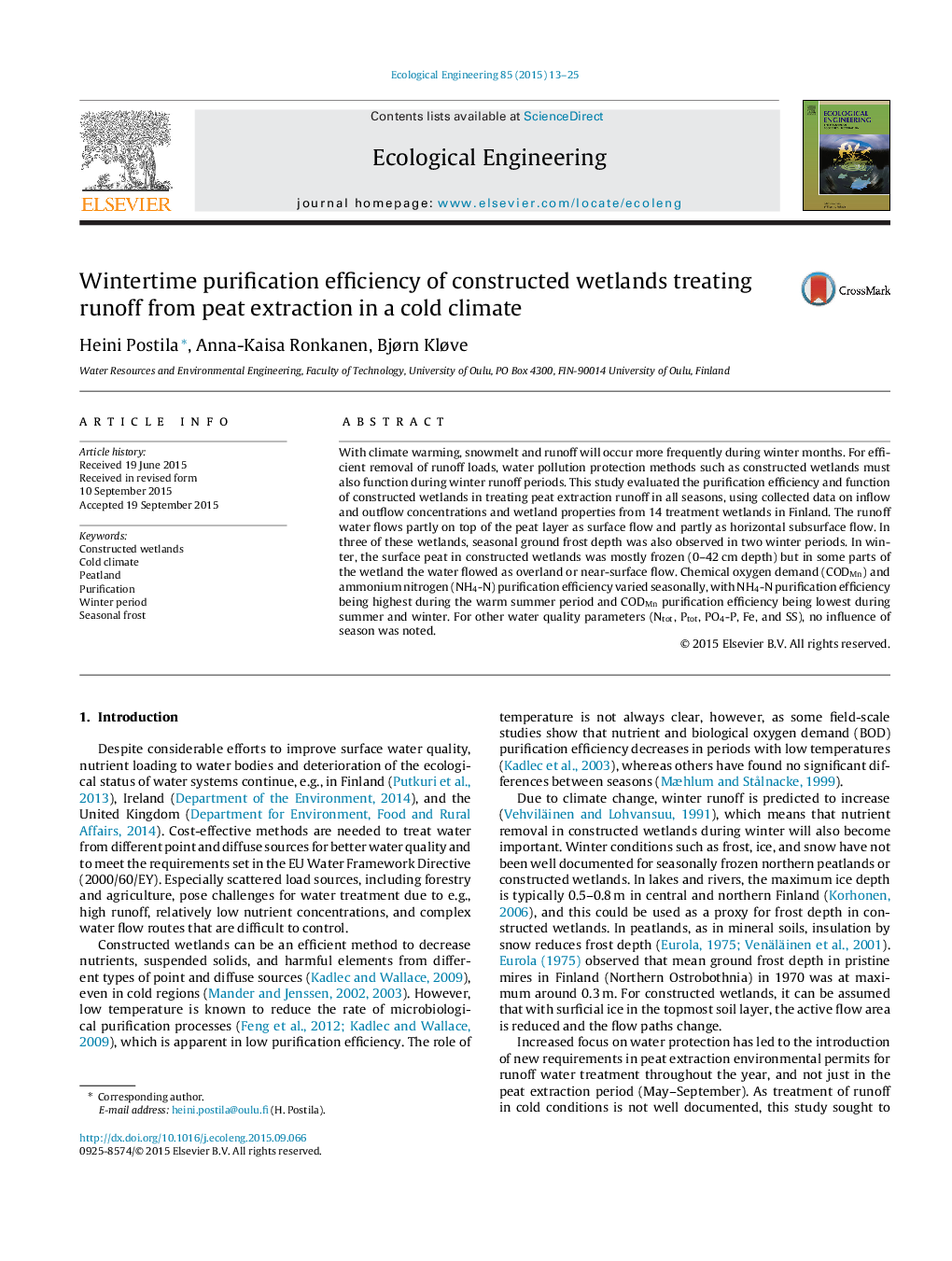| Article ID | Journal | Published Year | Pages | File Type |
|---|---|---|---|---|
| 6301581 | Ecological Engineering | 2015 | 13 Pages |
Abstract
With climate warming, snowmelt and runoff will occur more frequently during winter months. For efficient removal of runoff loads, water pollution protection methods such as constructed wetlands must also function during winter runoff periods. This study evaluated the purification efficiency and function of constructed wetlands in treating peat extraction runoff in all seasons, using collected data on inflow and outflow concentrations and wetland properties from 14 treatment wetlands in Finland. The runoff water flows partly on top of the peat layer as surface flow and partly as horizontal subsurface flow. In three of these wetlands, seasonal ground frost depth was also observed in two winter periods. In winter, the surface peat in constructed wetlands was mostly frozen (0-42Â cm depth) but in some parts of the wetland the water flowed as overland or near-surface flow. Chemical oxygen demand (CODMn) and ammonium nitrogen (NH4-N) purification efficiency varied seasonally, with NH4-N purification efficiency being highest during the warm summer period and CODMn purification efficiency being lowest during summer and winter. For other water quality parameters (Ntot, Ptot, PO4-P, Fe, and SS), no influence of season was noted.
Related Topics
Life Sciences
Agricultural and Biological Sciences
Ecology, Evolution, Behavior and Systematics
Authors
Heini Postila, Anna-Kaisa Ronkanen, Bjørn Kløve,
